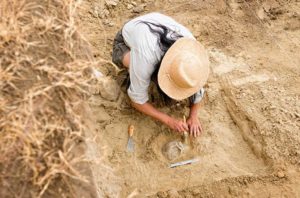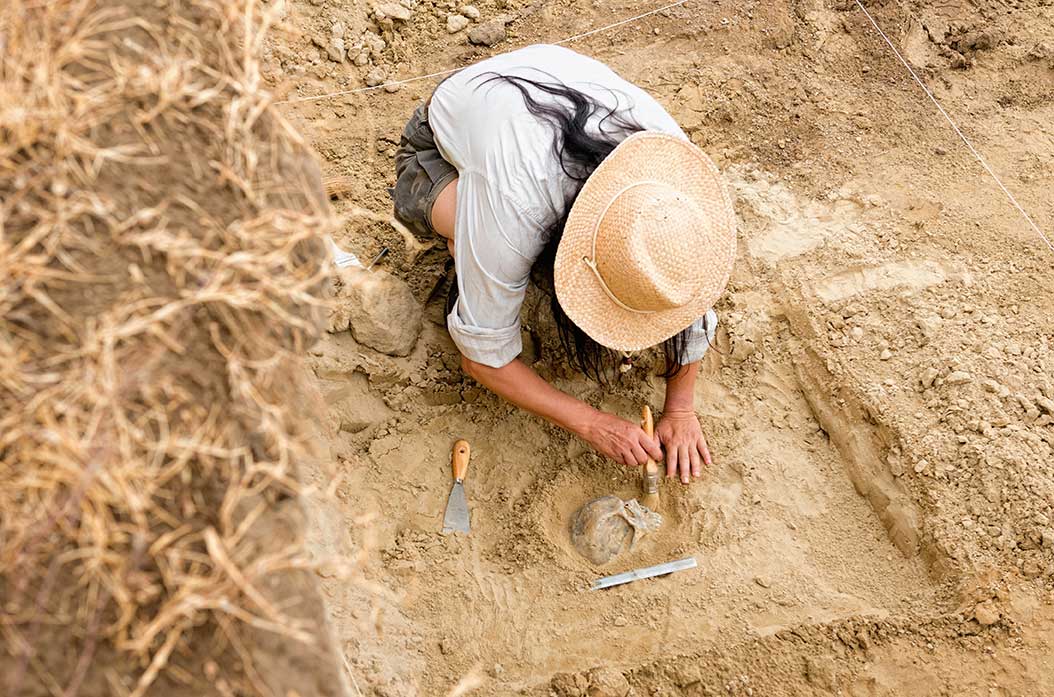Disclaimer: The information on our website is provided for general information purposes only. We make no representations or warranties of any kind, express or implied, about the completeness, accuracy, reliability, suitability or availability with respect to the website or the information contained on our website for any purpose. Any reliance on such information is therefore strictly at your own risk and we are not liable for any damages or losses arising out of or resulting from your reliance on any information contained on our website.
An archeologist studies civilization’s past by studying the physical remains of artifacts left by that civilization to understand their culture. Archeology is actually a subfield of anthropology, as anthropology is a broad study of all human culture. Archeologists want to understand why people lived where they lived and what their life might have been like. In fact, it’s archeologists that even discover the advances made by civilization over time. Watch this video to learn what an archeologist does:
How to Become an Archeologist
You may gain a foot in the door in this career field by earning your bachelor’s degree. In fact, you may even gain an entry level job as a field worker or assistant this way. However, to conduct independent studies or projects you must further your education. Archeologists hold master’s degrees or a PhD in archeology with 12-30 months of field work. Also, employers expect to see experience in some form of archaeological field.
Job Description of Archeologist

An archeologist researches the culture and past human life in history from remains. They also analyze architectural features, artifacts, and structures found in excavation or underwater recovery. These professionals must also record an object’s location as well as date and identify the objects an excavation recovered. Thus, documentation is vital and includes an artifact’s function, shape, size, and decoration. In addition, an archeologist would also describe an artifact’s attributes or physical properties, like the materials they were made of.
Archeologists answer specific questions about past societies and cultures. In addition, they share their research and write or publish reports that record site methodology, history, and artifact analysis. They would also give their recommendations and findings to colleagues and the general public for interpreting findings and conserving.
An archeologist can work in museums, parks, historic sites, public education, or manage exhibits. However, others work in laboratories or at an archaeology field site. Often times, archeologists travel all over the world and to certain geographical locations.
Archeologist usually work full time and may work more than a traditional work schedule. At times they may work 7-10 days in a row consequently having to work on close deadlines or limited permits. Work hours in the field usually start in early mornings and end at noon, especially in hot climates. A technician or assistant may work in the evening processing data that has been found throughout the day. Archaeologists have a slow growth rate therefore employment opportunities are limited and can very be competitive
Archeology Online Magazine at archaeology.org is a publication of the Archaeological Institute of America.
Archeologist Career Video Transcript
What most people think about when they think of archeologist, is going out in the field and digging things up and finding bones and pots and things like that, and that’s certainly a big part of what goes into archeology. But probably the bigger part, the more important part, is being able to explain what those bits and pieces actually mean. We use things like shovels and sometimes picks. We also use smaller tools like trowels or smaller digging spades.
One of the tools that we use is something called a screen, which it’s actually sort of like your window screen but a little bigger and we put the dirt in there and shake it. So what that does is it separates all the smaller dirt particles from the artifacts and then you look through what remains in the screen. This farm was actually part of a plantation that was established in 1794 by a family of French people. They had about 748 acres total and they had 90 enslaved laborers in their possession.
Information from a Dig
An eye witness account that gave us a little of a clue as to the general location of where the slave quarters were and then we really just had to go out and start digging. We uncovered a wide variety of artifacts. Everything from broken glassware and ceramics to rusty old nails and pieces of hardware. Lots of food remains so bone and shell. This is a shell pendant and this is made of oyster shell, like the shell that we have here. So this would have been made likely by one of the enslaved individuals and they would have taken the larger shell and they would made it into this decorative object and then inscribe all of these little lines that go down here and the hole that they probably would have put a cord through to wear it. This is actually an 1817 U.S. large cent, which is the equivalent of what today is the penny and you can probably tell that it’s much bigger than a penny today and that’s one of the attributes along with the date that help us figure out when this was made.
Article Citations
- Bureau of Labor Statistics, U.S. Department of Labor, Occupational Outlook Handbook, Anthropologists and Archeologists.
- National Center for O*NET Development. 19-3091.02. O*NET OnLine.

